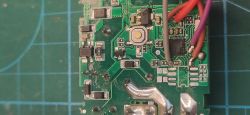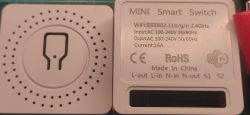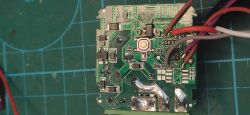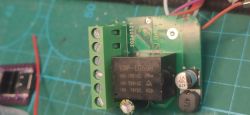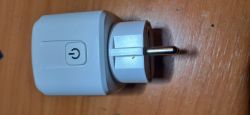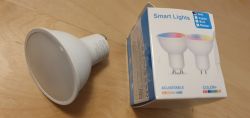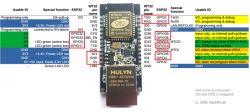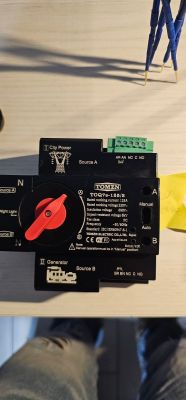Two possibilities: The WebApp has an "GPIO Doctor" allowing you to set pins high/low, so you can test, which pin will "click" the relay - But for me it quite often crashes.
My suggestion:
Go to config page and define some e.g. 5 pins "AlwaysHigh". If after "Save" it "clicks" - the relay switched by one of these pins, try setting pin by pin to "AlwaysLow" to find which one actually switched the relay.
If it doesn't "click", try next 5 and so on.
If you don't find it this way, it might be the seldom case of an "Relay_n" (switched on with "Low").
If you din't find it up to now, all pins are now "AlwaysHigh", so you start the search the other way - setting 5 to "AlwaysLow", if this switches, find the correct one by setting to "AlwaysHigh" one by one.
Good luck
Added after 42 [minutes]:Or, even simpler, get config from your backup:
Using Easy UART Flasher will give:
Device configuration, as extracted from Tuya:
- Pair/Toggle All Button on P23
- WiFi LED on P26
- TglChannelToggle (channel 1) on P6
- Relay (channel 1) on P7
Device seems to be using CB2S module, which is using BK7231N.
And the Tuya section starts, as usual, at 2023424
Or, e.g. with Linux (or WSL, or busybox ...)
strings readResult_BK7231N_QIO_bk7231n_2025-01-10-21-55-44.bin | grep rl1 | sed "s/,/,\n/ g"
{rl1_lv:1,
on_off_cnt:10,
onoff_rst_m:1,
onoff_clear_t:10,
rand_dpid:42,
net_trig:2,
onoff_n:3,
netled1_lv:1,
jv:102,
onoff_rst_type:2,
total_bt_pin:23,
nety_led:2,
total_stat:2,
reset_t:5,
netled1_pin:26,
remote_add_dp:49,
remote_list_dp:50,
net_type:0,
inch_dp:44,
module:CB2S,
ch_cddpid1:9,
onoff1:6,
clean_t:5,
init_conf:38,
zero_select:0,
onoff_type:0,
series_ctrl:0,
total_bt_lv:0,
cyc_dpid:43,
remote_select:0,
ch_num:1,
rl1_pin:7,
netn_led:2,
ch_dpid1:1,
crc:6,
}ZZZZ
will also show pin for relay 1 is 7: "rl1_pin:7,"
